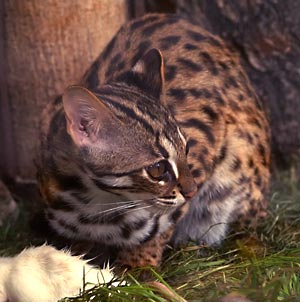Facts About Leopard cat
The leopard cat is a small wild feline found across parts of Asia and is currently listed as "Least Concern" on the IUCN Red List. Initially, it was believed to be the same species as the Sunda leopard cat, but scientists have since recognized them as distinct species. These cats are classified into various subspecies, each differing in fur color, size, and other traits. Notably, the leopard cat was the first feline species to be domesticated in Neolithic China.
Leopard cats are similar in size to domestic cats, featuring slender bodies, striking markings, and long tails. They thrive in a variety of habitats, ranging from tropical rainforests to high elevations in the Himalayas. Their diet is quite diverse, including small mammals, birds, reptiles, and insects.
Taxonomically, the leopard cat is divided into several subspecies distributed across Asia. Recent genetic studies have identified two main species: the mainland leopard cat and the Sunda leopard cat.
Leopard cats lead solitary lives and are primarily nocturnal hunters. They are adept climbers and have a varied diet. Breeding occurs year-round in tropical areas, but in colder regions, females typically give birth in the spring. Despite their "Least Concern" status, leopard cats face threats such as habitat loss, hunting for their fur, and illegal trade.
To protect them, leopard cats are listed in CITES Appendix II, and various conservation measures are implemented in certain regions. While the species is not endangered overall, some populations, like the Tsushima leopard cat, are critically endangered.
Leopard cats have also been bred with domestic cats to create hybrid breeds such as the Bengal cat. These hybrids are popular pets but are regulated in some countries. Fossil evidence indicates that leopard cats were domesticated in ancient China before domestic cats from the Middle East predominated.

 Cambodia
Cambodia